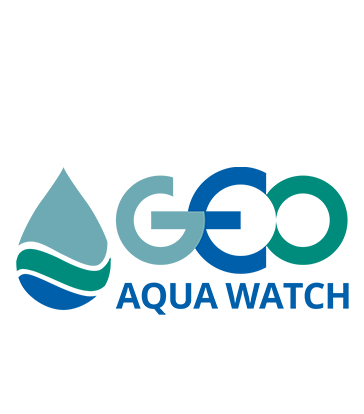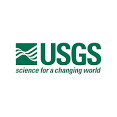| Introductory Webinar: Monitoring Aquatic Vegetation with Remote Sensing | |
| July 12, 14, & 19, 2022 11:00-12:30 EDT (UTC-4)Aquatic vegetation (AV) provides a habitat for numerous small invertebrate and fish species. Kelp forests, for example, are the dominant coastal ecosystem in temperate waters. The presence of AV in coastal waters is a normal occurrence, as it is an important component of the natural marine environment. Nevertheless, in the last decades, the appearance of increasingly abundant mats of certain floating species in other coastlines (i.e., Caribbean/Atlantic) has become a nuisance to local economies. Sargassum mats, for example, are reaching coastal areas by tons every year and there is still not a clear hypothesis as to why this is happening. While these mats provide an important habitat for small invertebrate and fish species, they also affect the amount of light reaching shallow-water ecosystems like coral reefs and seagrass beds. Several NASA-funded efforts are currently using remote sensing techniques to monitor the presence of Sargassum in Caribbean and Atlantic waters, while others have a citizen science-oriented approach to follow giant kelp populations in the Pacific. This training will combine basic information on the remote sensing of AVs, spectrometry of aquatic/coastal vegetation, and a demonstration of the NASA-funded Floating Forests citizen science tool.
|
|
| Webinar Introductorio: Monitoreo de la Vegetación Acuática con Teledetección | |
| Los días 12, 14, y 19 de julio de 2022 14:00h a 15:30h horario este de EE.UU. (UTC-4)La vegetación acuática (AV por sus siglas en inglés) sirve de hábitat para numerosas especies de invertebrados y peces pequeños. Los bosques de kelpo, por ejemplo, son el ecosistema costero dominante en aguas templadas. La presencia de AV en aguas costeras es una ocurrencia normal ya que es un componente importante del ambiente marino natural. Sin embargo, en las últimas décadas, la aparición de mantos cada vez más grandes de ciertas especias flotantes en otras zonas costeras (p.ej, el caribe, el atlántico) se ha convertido en un estorbo para las economías locales. Esta capacitación combinará información básica sobre la teledetección de la AV, espectrometría de la vegetación acuática/costera y una demostración de la herramienta de la ciencia ciudadana fundada por la NASA, Floating Forests.
|
Category: Uncategorized
Early Career Post/Doc Job Opportunity @USGS!
Attention early career scientists! Are you interested in doing applied research? Are you skilled in aquatic remote sensing? Apply your skills at the USGS California Water Science Center conducting science for a changing world. The Biogeochemistry Group (BGC) at the U.S. Geological Survey California Water Science Center (CAWSC) is seeking a postdoctoral candidate to work on a variety of projects related to remote sensing of water quality in estuarine and inland waters. The successful applicant will join a vibrant research group studying nutrient biogeochemistry and algal ecology in the San Francisco Estuary and inland waters. The California Water Science Center expects to open a permanent position for a researcher specializing in aquatic remote sensing in the near future.
The specific projects funding this position involve issues such as early detection of harmful algal blooms, water quality impacts of fires, tracking contaminants, regional assessments of temperature and turbidity. We note that most projects involve co-development of methods for near-field remote sensing in conjunction with improving earth observations.
The candidates will be help lead one of the current research projects, write peer-reviewed manuscripts and collaborate with other projects. In addition to leading existing projects, the candidate will also have opportunities to write grants and develop new research projects in collaboration with PIs in the BGC.
The applicant must be a U.S. citizen and have earned a Ph.D. in Biology, Ecology, Oceanography, Limnology, Engineering, or other relevant field within the past 5 years. Applicants must have relevant experience and a strong publication history.
Interested applicants should email 1) a cover letter stating research interests and career goals, 2) current curriculum vita, and 3) copies of academic transcripts and publications. When prompted, please provide names, phone numbers, and email addresses of three professional references. Salary will be at a GS-12 level.
We will begin reviewing potential candidates on June 3, 2022, but will continue to consider applications until these positions are filled.
For questions about this announcement, please email Keith Bouma-Gregson, kbouma-gregson@usgs.gov.
Check us out next week ESA Living Planet ’22: A7.06 EO for Monitoring Water Quality….
| Join us next week at ESA Living Planet Symposium for a special 3 part session on water quality, A7.06 ‘EO for monitoring water quality and ecological status in inland waters’, convening Thursday afternoon May 26th as part of the ESA Living Planet Symposium, Bonn (https://lps22.esa.int/).
The 3 back-to-back sessions will run from 1:30pm – 4:30pm and focus on the innovative use of Earth Observation for water quality monitoring and ecological research. We will interpret inland waters in a broad sense to include nearshore coastal environments. The full session description is included below. A7.06 EO for monitoring water quality and ecological status in inland waters Session Description: Inland waters are important and vulnerable ecosystems that, despite covering a relatively small area of the Earth’s surface, support a disproportionate amount of biodiversity and ecosystem services, providing numerous benefits to humans such as food provisioning, transportation, and recreation. Moreover, inland waters are increasingly threatened by anthropogenic pressures including climate change, land use intensification and eutrophication. Satellite remote sensing can contribute to monitoring and understanding changes in water quality parameters (turbidity, chlorophyll etc.), ecological status (e.g., trophic status, toxic algal blooms) and ecological processes (e.g., primary production) in inland waters, providing valuable data for investigating the drivers and impacts of these changes, and supporting water resources management and decision-making. In recent years, there has been a shift from remote sensing studies focused on individual waterbodies to the development of products that can be applied at a regional or global scale, including efforts to generate global products that combine information from several satellite sensors to produce multi-decadal records of lake parameters. However, there is still much to be done to generate Earth Observation algorithms and data products, that are robust across the wide concentrations ranges of optically active water constituents present in inland waters. This session aims to showcase the development and application of new methods for monitoring water quality and ecological status of inland waters using satellite Earth Observation technologies. Contributions are particularly welcomed that describe novel approaches (e.g., using machine learning, ensemble classifiers, cloud computing and new satellite sensors) that are applicable across multiple waterbodies and that allow investigation of long-term temporal dynamics and spatial patterns within and between inland waters. We seek presentations which demonstrate a holistic approach to characterizing inland water ecosystems, integrating remote sensing, in situ data and modelling. Of particular interest would be projects which leverage technology or unique capacity development techniques to get the water quality information into the hands of decision-makers to improve water resource management. Convenors: Emma Tebbs (King’s College London); Carmen Cillero (3edata); Merrie Beth Neely (GEOAquaWatch); Ils Reusen (VITO Remote Sensing); Stefan Simis (Plymouth Marine Laboratory); Evangelos Spyrakos (University of Stirling)
|
Introductory ARSET Training Series: June 1, 8, &15 – Satellite Evapotranspiration
| Introductory Webinar: Applications of Remote Sensing-Based Evapotranspiration Data Products for Agricultural and Water Resource Management | |
| June 1, 8 & 15, 2022 11:00 – 12:30 EDT (UTC-4) or 16:00 – 17:30 EDT (UTC-4)Evapotranspiration (ET) is the process by which the land surface returns water to the atmosphere in the form of moisture. ET is a very important part of the water cycle in the Earth system. It is the sum of evaporation from bare soil and transpiration from vegetation. For a given watershed, the supply of water from precipitation, surface and groundwater can be depleted via ET. Therefore, estimating the amount of ET is crucial for calculating the overall water budget and for effective water management. Since ET indicates loss of moisture from the soil and vegetation, monitoring ET on agricultural fields helps with crop irrigation activities and water conservation. Because ET depends on land surface characteristics such as type of vegetation and soil moisture, available heat energy from sunlight, and atmospheric weather conditions; it is not possible to measure ET directly. Remote sensing observations provide several of the land and atmospheric parameters useful for estimating ET. Several methodologies have been developed using various satellite observations to estimate ET over the past two decades. These ET products are used for a variety of applications from the farm scale to the watershed scale. This 3-part webinar series focuses on introducing newly available ET products derived from remote sensing observations. It will specifically cover a web portal called OpenET (https://openetdata.org/), which includes ET products estimated by using six models as well as Landsat satellite observations. These ET products cover the western United States. In addition, information about global ET products derived from ECOsystem Spaceborne Thermal Radiometer Experiment on the Space Station (ECOSTRESS) will also be covered. The webinar series will provide details about OpenET and ECOSTRESS ET products, demonstrations and hands-on exercises for data access and analysis, and examples of applications of the data.
|
Call for Submissions: Special Issue of Remote Sensing
The open access journal Remote Sensing (ISSN 2072-4292, IF 4.848) is pleased to announce a new Special Issue entitled “Remote Sensing Observation on Coastal Change”. Dr. Manon Besset and Dr. Halina Kaczmarek are serving as Guest Editors for this issue. The submission deadline is 31 October 2022 and papers may be submitted immediately or at any point until 31 October 2022, as papers will be published on an ongoing basis. For more information on this Special Issue and submission guidelines, please visit the following page: https://www.mdpi.com/si/
We also invite you to post an early version of your paper on our free preprint platform, Preprints, allowing you to receive feedback from your peers and make your early results citable. For more information or to submit your preprint, visit https://www.preprints.org/how_




